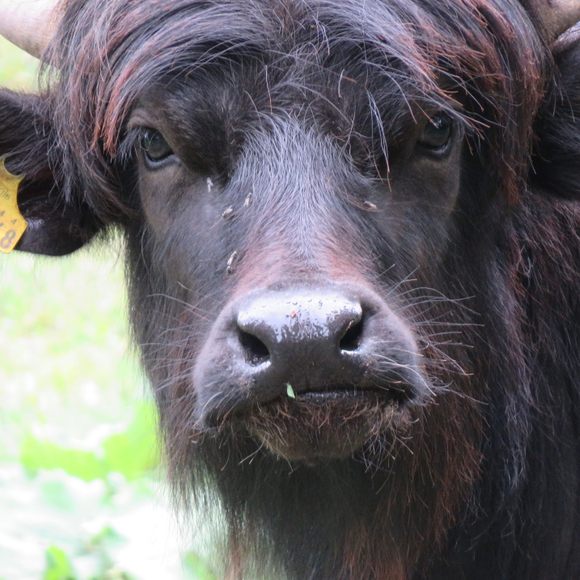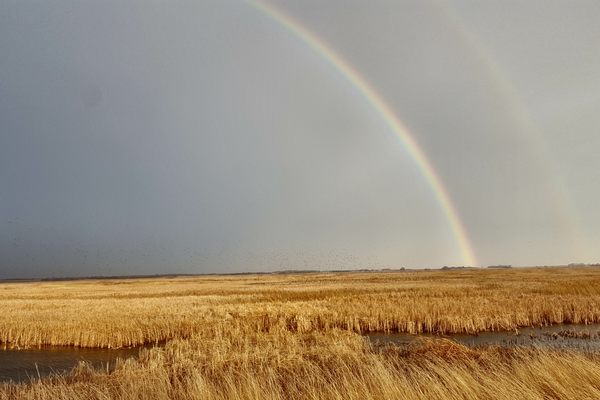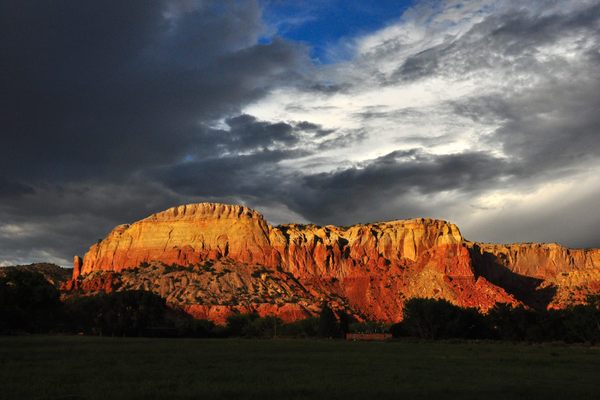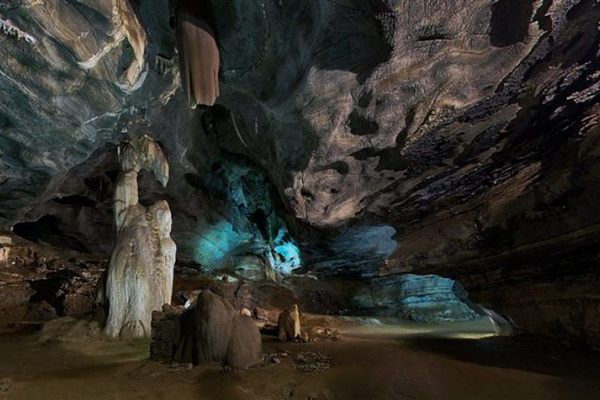Tegel Creek Water Buffaloes
The non-native bovine herd was brought in to help conserve these Berlin wetlands.
Tegeler Fließ, or Tegel Creek, is the name given to a broad swath of wetlands that wind their way gradually westward in a looping path to Tegeler Lake. Like many semi-urban wetlands, the original ecosystem has been greatly decimated, making its preservation both difficult and expensive. Robbed of their native fauna, trees and invasive vegetation grow unchecked in such areas, eventually choking off the flow of water entirely, and require constant vigilance to stay self-sustaining.
In 2011, the government of Berlin decided on an unconventional solution to its conservation problem, importing a nine-head herd of water buffalo to the city. With their huge splayed hooves (which allow them to traverse swampy land easily) and appetite for reeds, sedges, and other plants shunned by standard cattle, water buffalo are the perfect agents of wetlands conservation.
And as anomalous a sight as the huge, curved-horned bovids may seem in the Central European landscape, this was not always the case. A millennium ago, water buffalo were endemic to Berlin and Brandenburg (as well as much of Europe) before all but dying out in the Middle Ages. Now associated almost exclusively with Equatorial regions and the Southern Hemisphere, they have nonetheless slowly been successfully reintroduced to warmer European regions (particularly Italy), though they remain a curious and anachronistic sight in Northern Europe.
The herd has taken well to their adopted German landscape, and in 2015, the animals, then totaling 13, were put into a regular rotation cycle in Tegeler Fließ. In addition to their value to the local ecosystem, the buffalo have also become something of a local attraction, offering a unique take on hide-and-seek as families try to track down their current location based on laminated signs posted throughout the area. The signs are updated in pen as the animals are cycled through different parts of the marsh, but given the large areas in which they have to roam, finding them can still pose a challenge.
Once located, use binoculars (or a sufficient zoom lens) to get a closer look at the animals as well as determine their given names, chosen by a local middle school in 2016. Names correspond to the animals’ yellow ear tags, and include such charmingly wholesome entries as Crumbs (83586), Felix (83573), and Nemo (83572).
Know Before You Go
The herd spends winters (usually from November to April) indoors, and is also brought inside during severe weather. If you see “zu hause” (“at home”) on the laminated signs, you’re out of luck. The best place to start your search is the pathway near the intersection of Mühlenfeldstraße and Jagowstraße, which serves as the “hub” of the rotation, with viewing areas placed at regular intervals along the paths that flank either side of the creek. The animals can roam far from the fenced-off path, so bring binoculars or an adequate zoom lens for best viewing.
















Follow us on Twitter to get the latest on the world's hidden wonders.
Like us on Facebook to get the latest on the world's hidden wonders.
Follow us on Twitter Like us on Facebook